Imagine walking into your home and instantly feeling a wave of calm wash over you. Every detail is curated with purpose, each element evoking serenity and balance. This is the world of Japandi Wall Art—a unique fusion where Japanese minimalism meets Scandinavian functionality. In this article, you’ll explore how this design trend can transform your living space into a haven of peaceful sophistication.
Table of Contents
Introduction

You deserve a space that not only looks beautiful but also feels like a sanctuary from the hectic pace of everyday life. Japandi Wall Art offers that escape by blending the art of Japanese simplicity with the sleek, functional aesthetic of Scandinavian design. Picture walls adorned with art that whispers tranquility, natural materials that ground you in the present, and a balanced composition that speaks directly to your need for calm.
In the following sections, you will learn what makes Japandi Wall Art so compelling, discover its core principles, and receive actionable tips on how to incorporate this style into your own home. Whether you’re a seasoned design enthusiast or just starting your journey toward a more mindful living space, this guide is designed to provide you with innovative ideas and practical advice for creating your dream home.
What is Japandi Wall Art?
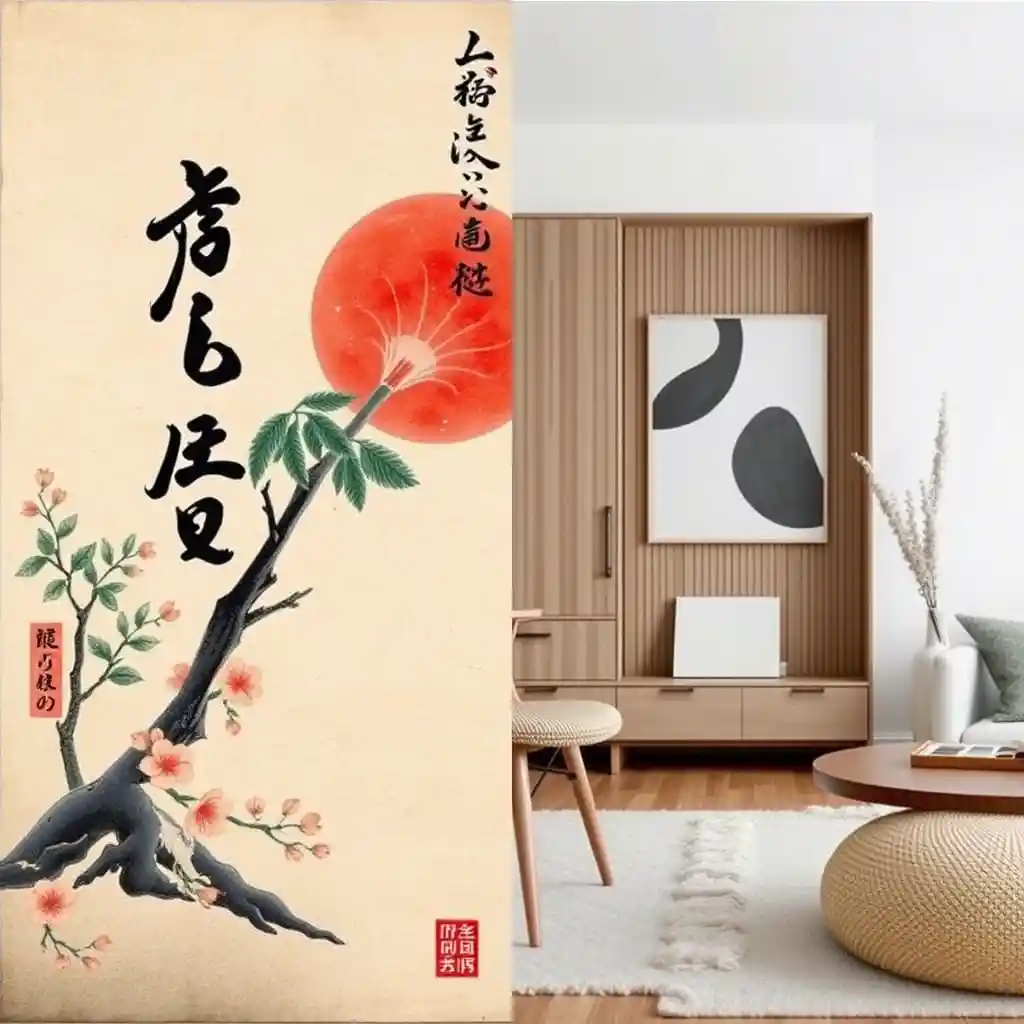
Definition and Origins
Japandi Wall Art is a distinctive style that merges the refined simplicity of Japanese aesthetics with the clean, cozy elements of Scandinavian design. You might ask, “How did such a unique style come to be?” The answer lies in the cultural philosophies of two regions: Japan, with its focus on minimalism and the art of wabi-sabi, and Scandinavia, known for its functional beauty and warmth.
- Japanese Influence: Emphasizes minimalism, imperfection, and natural beauty. It’s all about appreciating the subtle details and the transient nature of life.
- Scandinavian Influence: Focuses on functionality, clean lines, and a cozy, inviting atmosphere. It celebrates simplicity while ensuring every element serves a purpose.
By fusing these principles, Japandi Wall Art creates a harmonious environment that appeals to those who seek both aesthetic pleasure and a deeper sense of well-being.
How It Differs from Other Wall Art Trends
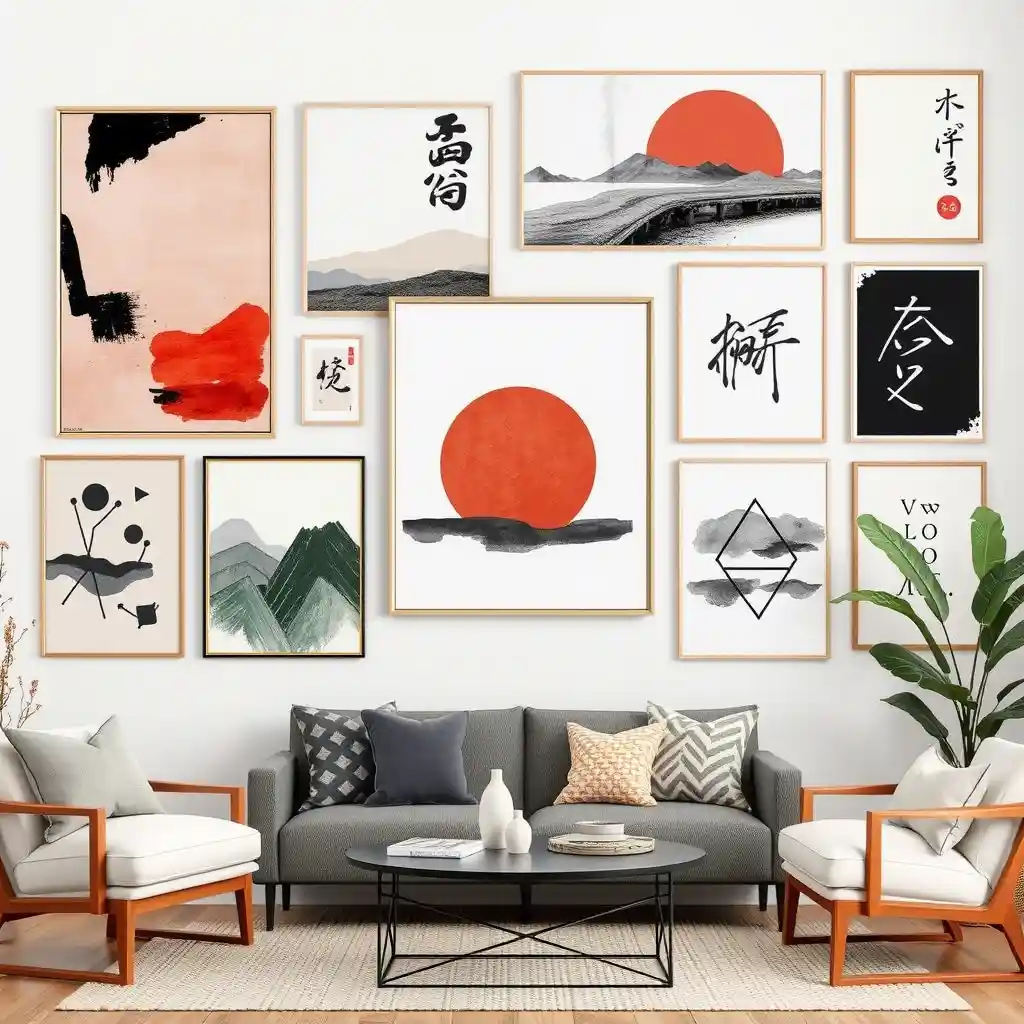
While many wall art trends focus on bold colors or intricate designs, Japandi Wall Art stands apart by prioritizing simplicity and balance. Here’s how you can distinguish it from other styles:
- Minimalist Aesthetics: Rather than overwhelming a space with too many visuals, Japandi art embraces the power of “less is more.”
- Natural Materials: It often features wood, bamboo, linen, and stone—materials that bring an organic touch to your home.
- Balanced Composition: The art is designed to create equilibrium, with every element positioned to enhance a sense of calm rather than chaos.
This unique approach not only refreshes your living space but also nurtures your mental well-being by reducing visual clutter.
Key Principles of Japandi Wall Art
Understanding the core principles behind Japandi Wall Art can help you appreciate its beauty and apply its philosophy to your home.
Minimalism and Simplicity
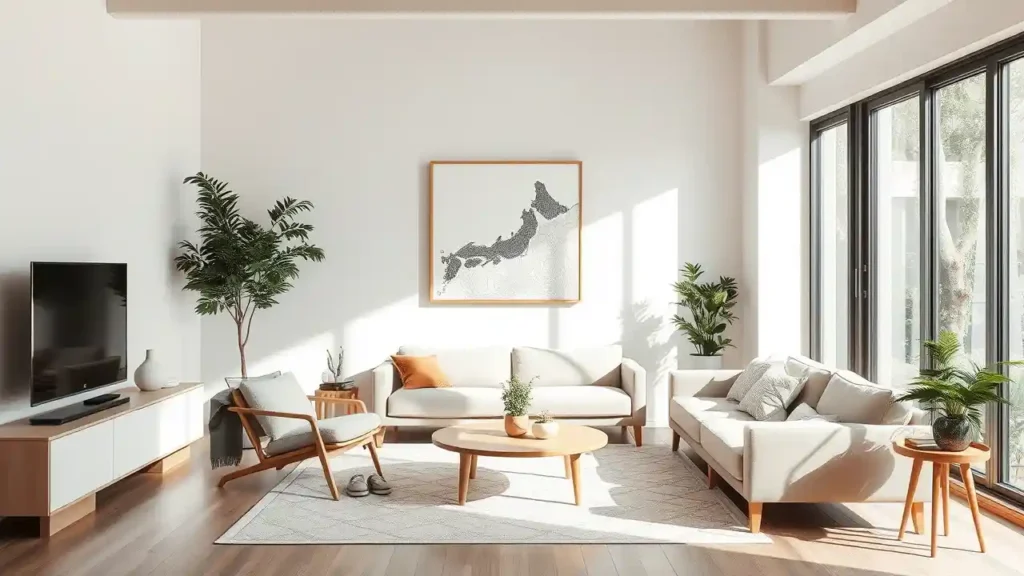
You might feel overwhelmed by the constant barrage of images and messages in today’s world. Japandi art offers a reprieve by stripping away the unnecessary and focusing on what truly matters.
- Clean Lines and Open Spaces: Every stroke, shape, and placement is intentional.
- Less is More: A single piece of art can serve as a focal point, allowing the space to breathe.
- Mindful Selection: Choose art that resonates with your personal taste, and don’t be afraid to leave empty spaces.
Wabi-Sabi Philosophy
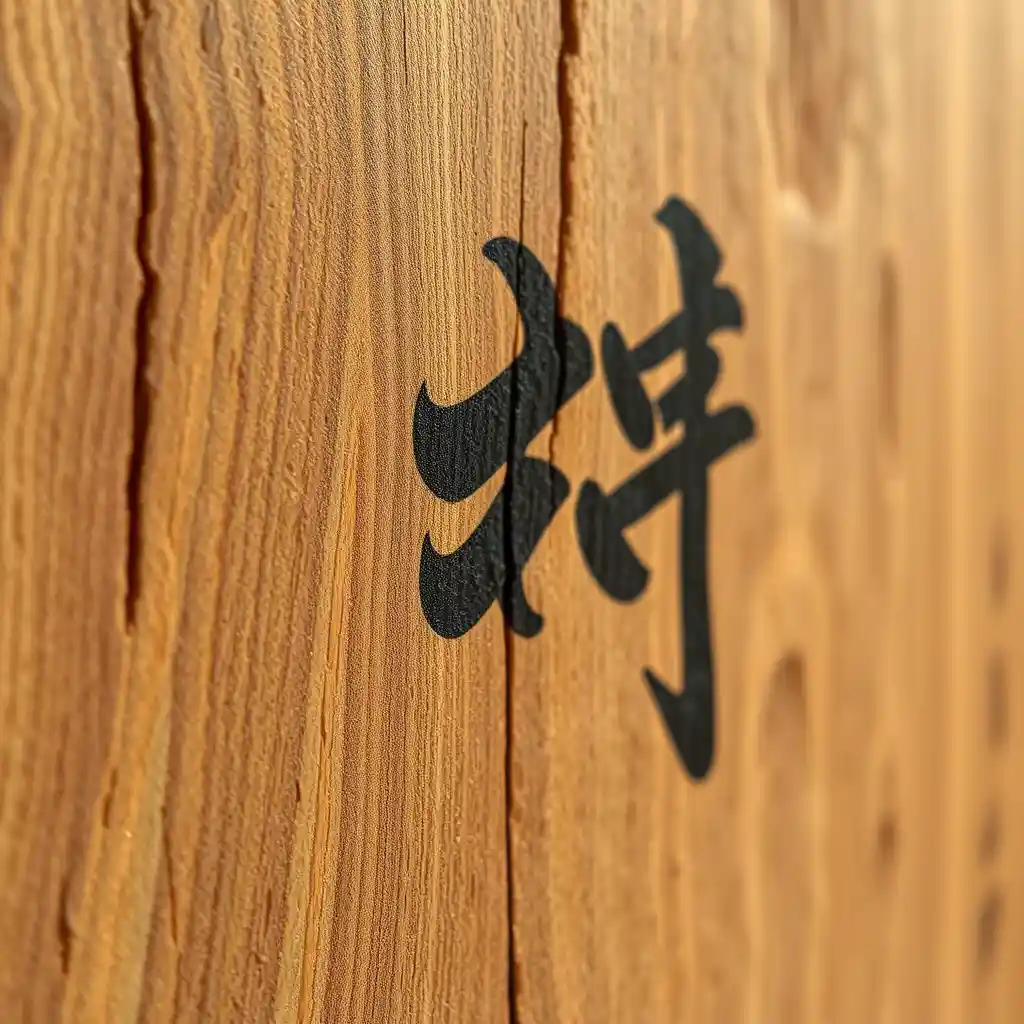
At the heart of Japanese aesthetics is the concept of wabi-sabi, which celebrates imperfection and the natural cycle of growth and decay.
- Embrace Imperfection: Your home becomes a canvas for the beauty found in natural irregularities.
- Natural Aging: Materials that develop a patina over time are cherished rather than hidden.
- Emotional Connection: Each piece of art tells a story—one of resilience, beauty, and the acceptance of change.
Harmony and Balance
In Japandi Wall Art, every element works together to create a space that is both visually appealing and emotionally soothing.
- Visual Equilibrium: Balance large pieces with smaller accents to create a cohesive look.
- Functional Art: Every piece not only looks good but also contributes to the overall ambiance of your room.
- Spatial Harmony: Consider the size and placement of your art to ensure that your space feels unified and welcoming.
Use of Natural Materials
The materials used in Japandi art are as important as the designs themselves. They root your space in the natural world.
- Wood: Provides warmth and texture.
- Bamboo: Offers flexibility and strength.
- Linen: Adds a soft, tactile quality.
- Stone: Introduces a rugged yet elegant contrast.
These natural materials not only enhance the visual appeal of your wall art but also connect you with the earth, grounding your space in nature.
Essential Design Elements for Japandi Wall Art
Integrating Japandi Wall Art into your home means paying attention to key design elements that ensure your space exudes tranquility and balance.
Color Palettes and Textures
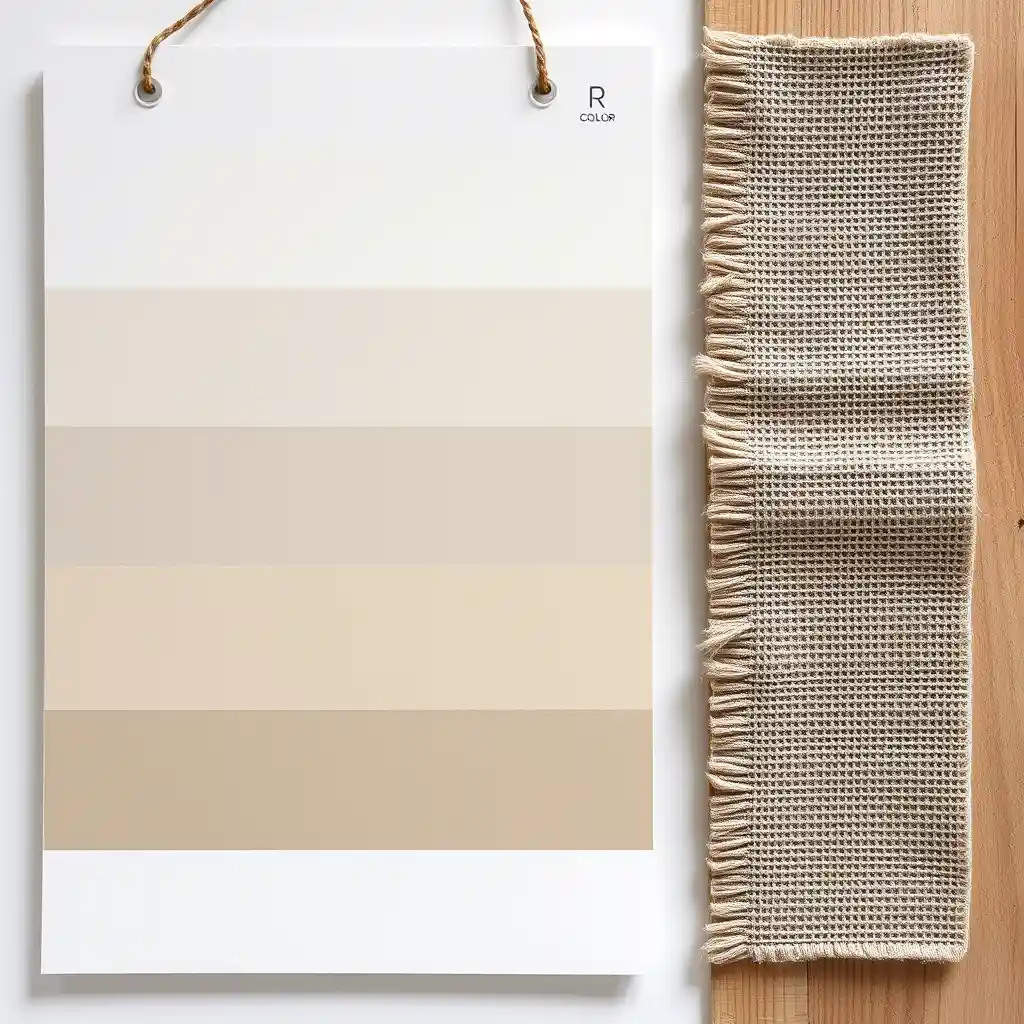
Your choice of colors and textures is crucial when creating a Japandi-inspired space.
- Neutral Tones: Think soft greys, beiges, and earthy hues. These colors evoke a sense of calm and serve as the perfect backdrop for your art.
- Muted Accents: Incorporate subtle pops of color through accessories and art pieces without overwhelming the overall scheme.
- Texture Combination: Mix smooth surfaces with textured fabrics or natural finishes to add depth and interest to your walls.
Bullet Points for Quick Reference:
- Soft greys and beiges
- Natural wood finishes
- Textured fabrics and organic prints
Shapes and Layouts
How you arrange your wall art can significantly impact the overall harmony of your space.
- Choose a Focal Piece: Start with one large, eye-catching piece that anchors your design.
- Complement with Supporting Pieces: Arrange smaller pieces around the focal point to create a gallery-like effect.
- Maintain Asymmetry: Don’t feel compelled to create perfect symmetry. Slight asymmetry often results in a more dynamic and natural look.
Complementary Decor and Accessories
To elevate your Japandi Wall Art, consider integrating complementary decor that enhances the theme.
- Japanese Calligraphy: Adds a traditional and artistic touch.
- Scandinavian Accents: Simple, modern pieces that provide a functional counterbalance.
- Natural Elements: Plants, stones, or even small sculptures that echo the natural materials used in your art.
Data Insight: Many interior design experts suggest that a mix of traditional Japanese motifs with modern Scandinavian elements creates a uniquely inviting atmosphere.
How to Integrate Japandi Wall Art into Your Home
You might be wondering how to bring this elegant style into your own living space. Below are tailored strategies for various home environments.
For Modern Living Rooms
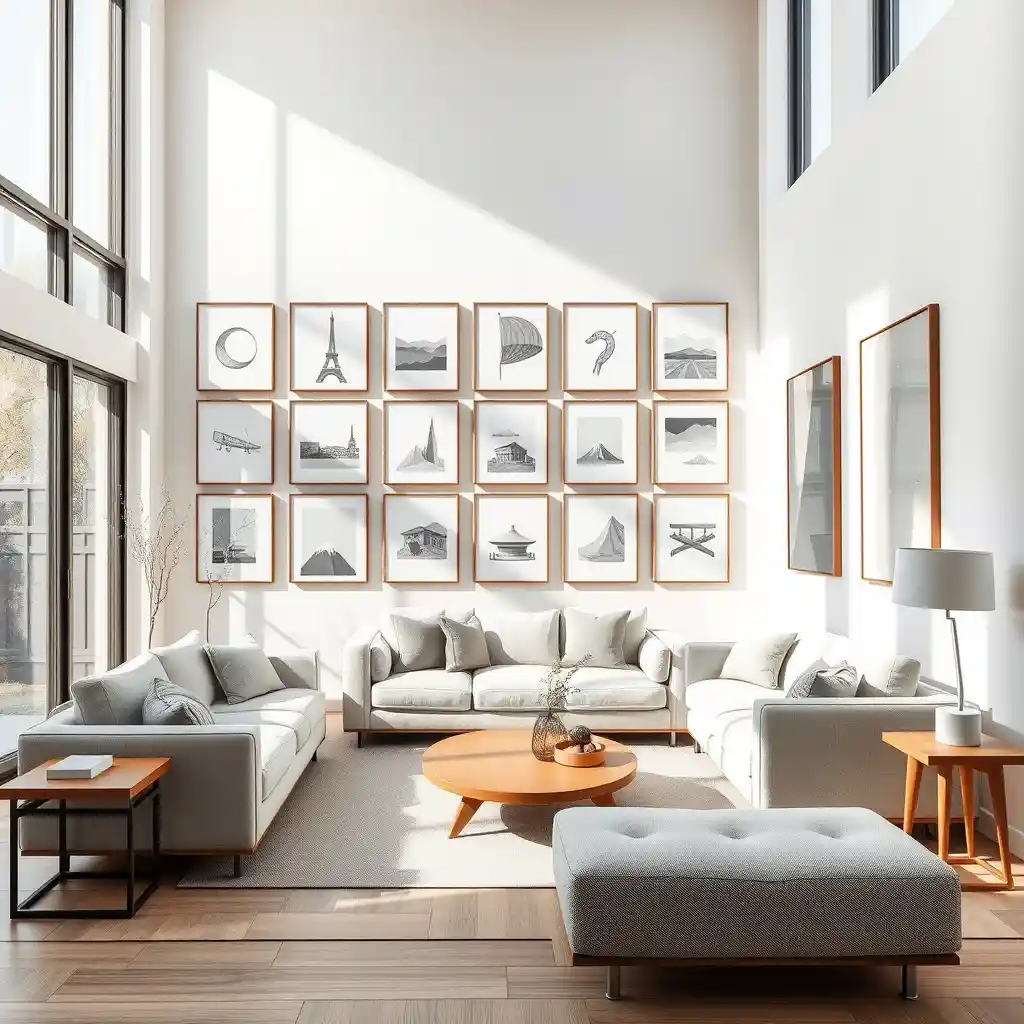
Your living room is often the heart of your home, and it’s the perfect place to showcase a gallery wall or a statement art piece.
Gallery Wall Ideas
- Mix and Match Frames: Use a variety of frame sizes and styles, but stick to a cohesive color palette.
- Layer Your Art: Combine abstract prints with natural textures and organic shapes.
- Create Depth: Use lighting strategically to highlight your gallery wall and add dimension.
Tips to Remember:
- Use natural light to enhance the textures.
- Consider the size of the wall and balance large art pieces with smaller ones.
- Opt for simplicity—let the art speak for itself.
For Small Spaces
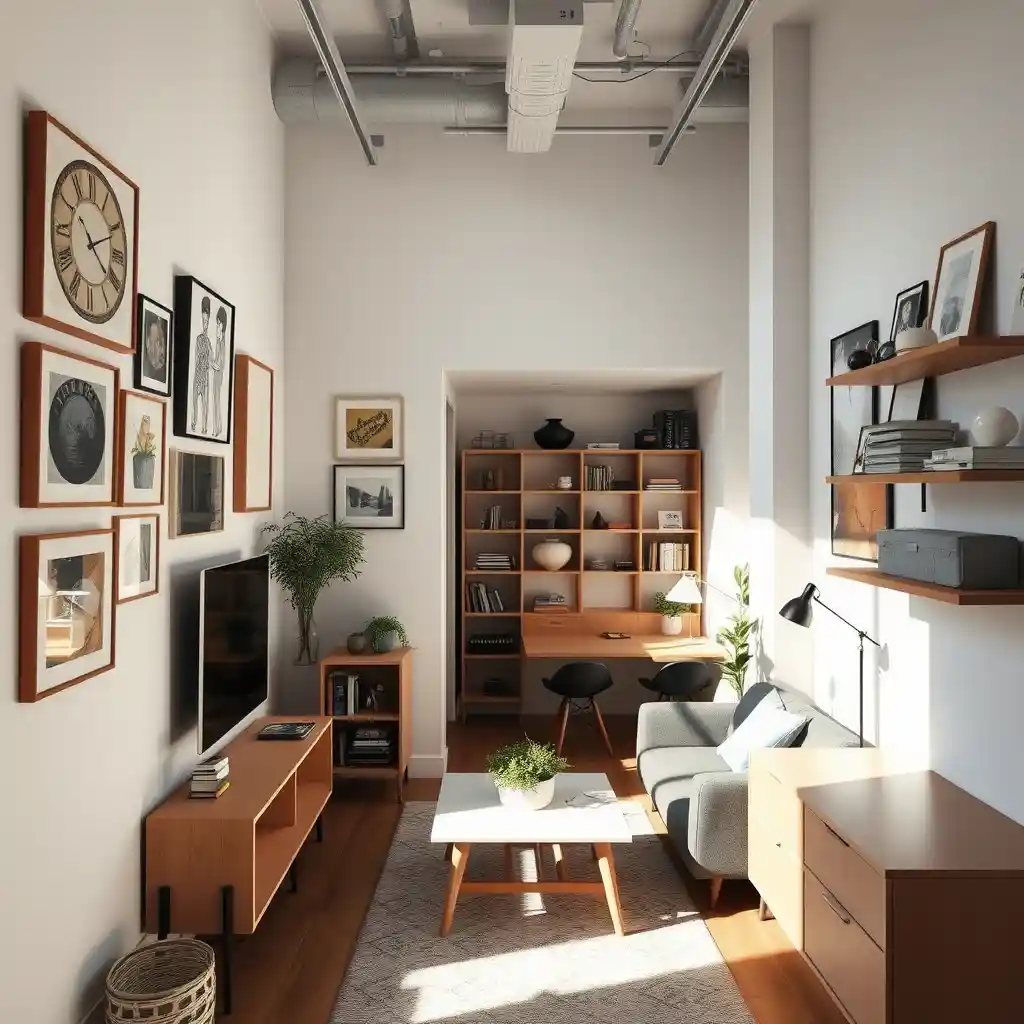
If you live in a compact apartment or a cozy room, Japandi Wall Art can still make a big impact.
- Multi-functional Pieces: Look for art that doubles as storage or shelving.
- Reflective Surfaces: Mirrors can enhance the perception of space and add a dynamic element.
- Vertical Arrangements: Instead of spreading out horizontally, consider vertical installations that draw the eye upward.
Bullet Points for Quick Ideas:
- Choose art pieces that are not too overpowering.
- Opt for lighter, neutral colors to keep the space feeling open.
- Use minimal but meaningful accents to avoid clutter.
DIY Projects: Innovative Wall Art Ideas for Your Dream Home
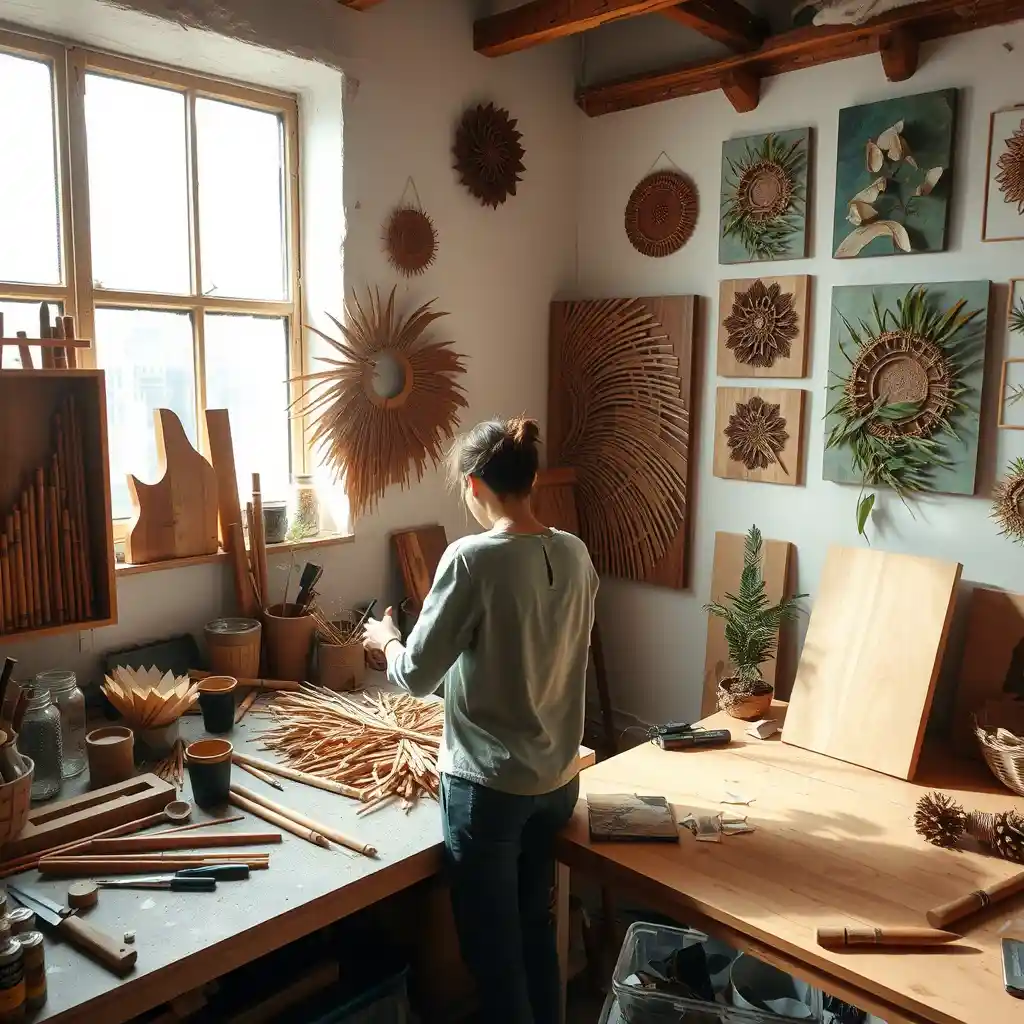
For those who enjoy hands-on projects, creating your own Japandi Wall Art can be a rewarding experience.
- Gather Materials: Collect natural materials like wood, bamboo, or recycled fabric.
- Plan Your Layout: Sketch your design to ensure it fits the intended space.
- Assemble Your Piece: Experiment with different textures and arrangements until you achieve the desired balance.
- Personalize It: Incorporate elements that resonate with your personal journey or aesthetic preferences.
DIY Tips:
- Look for inspiration on design blogs and social media platforms.
- Start with a small project if you’re new to DIY art.
- Enjoy the creative process and let imperfections add character to your work.
Wall Art Ideas: Innovative Tips for Your Dream Home
As trends evolve, so does the approach to Japandi Wall Art. Here are some forward-thinking ideas to keep your design ahead of the curve.
Latest Trends in Japandi Wall Art for 2025
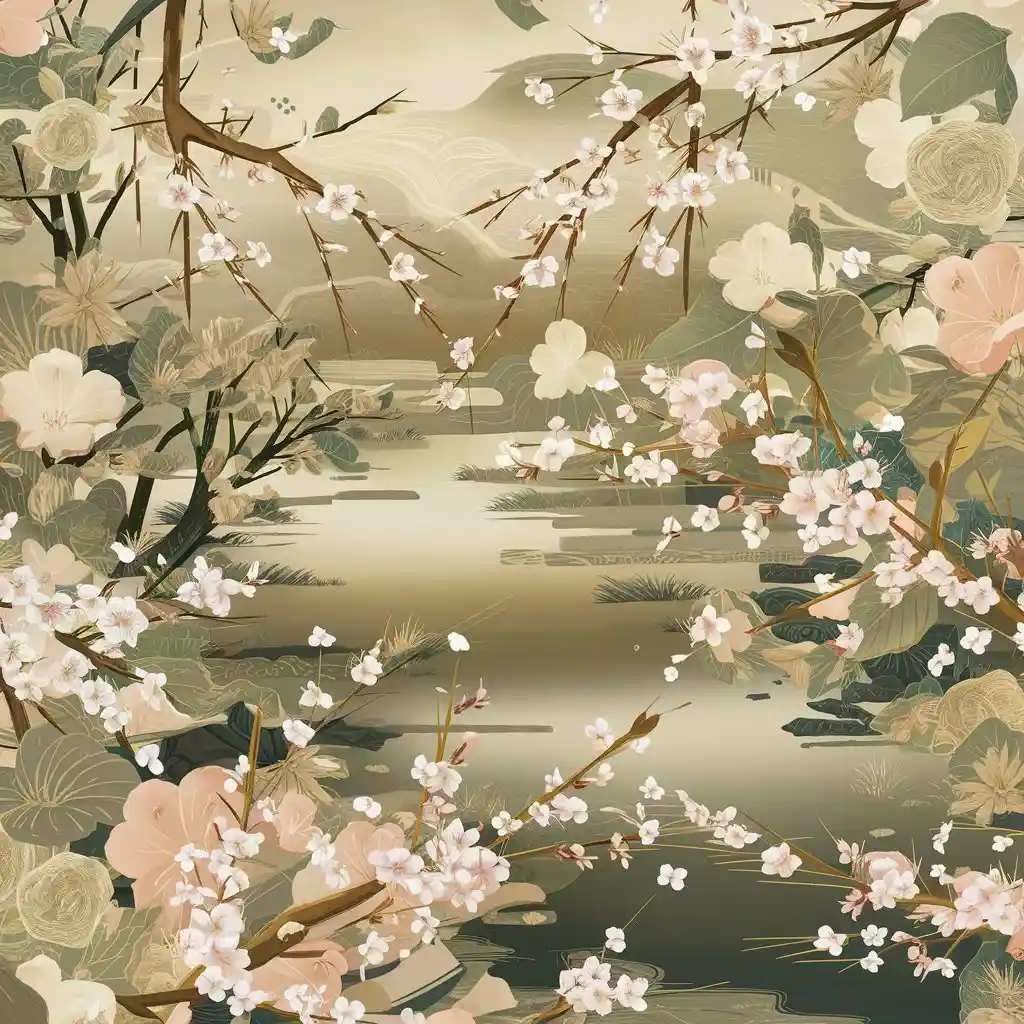
- Digital Art Prints: Embrace technology with digital prints that offer modern interpretations of traditional themes.
- Sustainable Design: Use eco-friendly materials and processes, aligning your decor with contemporary values of sustainability.
- Interactive Elements: Consider art that can be rearranged or personalized over time, keeping your space dynamic and engaging.
Customization and Personal Touches
Your home should be a reflection of who you are. Customizing your Japandi Wall Art allows you to infuse personality into every detail.
- Custom Framing Options: Choose frames that complement your decor while adding a personal touch.
- Personalized Color Schemes: Experiment with different neutral palettes until you find one that resonates with your style.
- Incorporate Mementos: Blend traditional Japandi elements with items that hold sentimental value, creating a narrative unique to your home.
Quick Customization Tips:
- Combine vintage and modern elements for a layered look.
- Use textures that evoke personal memories.
- Consider hiring a local artisan for bespoke pieces.
Case Studies and Real-Life Examples
Seeing Japandi Wall Art in action can inspire you to transform your own space. Let’s look at some real-life examples and projects.
| Project Type | Key Features | Outcome |
|---|---|---|
| Modern Living Room | Gallery wall with neutral palette, natural materials | Bright, spacious, and balanced ambiance |
| Small Apartment | Multi-functional art, space-saving design | Enhanced depth and an open, inviting feel |
| DIY Japandi Wall Art | Custom DIY projects using sustainable materials | Personalized and unique wall decor that tells a story |
Case Study Insights:
- Modern Living Room: In a recent project, a family transformed their living room by incorporating a gallery wall. They mixed abstract art with natural textures and found that the space not only looked larger but also felt more relaxed.
- Small Apartment: A young professional used vertical arrangements and reflective surfaces to create an illusion of more space while maintaining the core elements of Japandi design.
- DIY Success: Another inspiring example is a DIY enthusiast who sourced reclaimed wood and bamboo to create a custom art piece that serves as the focal point of her home.
Frequently Asked Questions (FAQ) About Japandi Wall Art
What is Japandi Wall Art and how can you incorporate it into your home?
Japandi Wall Art is a blend of Japanese minimalism and Scandinavian functionality. You can incorporate it by choosing art pieces that emphasize simplicity, using natural materials, and maintaining a balanced composition in your space.
How do you balance traditional Japanese and modern Scandinavian elements in wall art?
Striking a balance is about careful curation. Start with a neutral background, add elements of traditional Japanese design like calligraphy or organic patterns, and complement these with modern Scandinavian accents such as clean lines and minimal decorative items.
Can Japandi Wall Art work in small apartments?
Absolutely. In small spaces, focus on multi-functional art pieces and vertical layouts to enhance your room’s sense of space without overwhelming it.
What materials should you consider when choosing Japandi Wall Art?
Look for natural materials such as wood, bamboo, linen, and stone. These materials not only reinforce the theme but also add texture and warmth to your space.
Where can you find inspiration for DIY Japandi Wall Art projects?
Inspiration can be found on design blogs, social media platforms, and DIY websites. Many creators share step-by-step guides that help you craft personalized pieces for your home.
Conclusion
By now, you should feel inspired and empowered to transform your living space with the timeless beauty of Japandi Wall Art. This unique style, which seamlessly marries the calming influence of Japanese minimalism with the practical elegance of Scandinavian design, offers you a pathway to create a home that reflects both serenity and sophistication.
Remember, the journey to a beautifully curated space begins with a single piece of art—a piece that tells your story, brings nature indoors, and transforms your walls into a canvas of calm. Whether you choose to purchase curated pieces or embark on a DIY project, every decision you make can enhance the ambiance of your home.
Call-to-Action
Take the first step toward a more harmonious home today. Explore local art stores, browse online galleries, or try your hand at creating your own Japandi-inspired masterpiece. Share your transformation story with friends and family, and join online communities of design enthusiasts who value simplicity and balance. Your dream home awaits, and it starts with embracing the elegance of Japandi Wall Art.
This comprehensive guide not only provides you with the practical steps needed to incorporate Japandi Wall Art into your home but also enriches your understanding of its cultural and aesthetic significance. By following these tips and embracing the philosophy of minimalism, you’ll create a space that is both visually stunning and deeply personal.
Take action now—reimagine your walls, rejuvenate your space, and let Japandi Wall Art inspire a new chapter in your home design journey. Your sanctuary of simplicity and elegance is just one decision away.
With these insights and practical guidelines, you are well-equipped to redefine your space and create an environment that nurtures both the body and the mind. Embrace the beauty of Japandi Wall Art and transform your home into a haven of tranquility and refined style.

